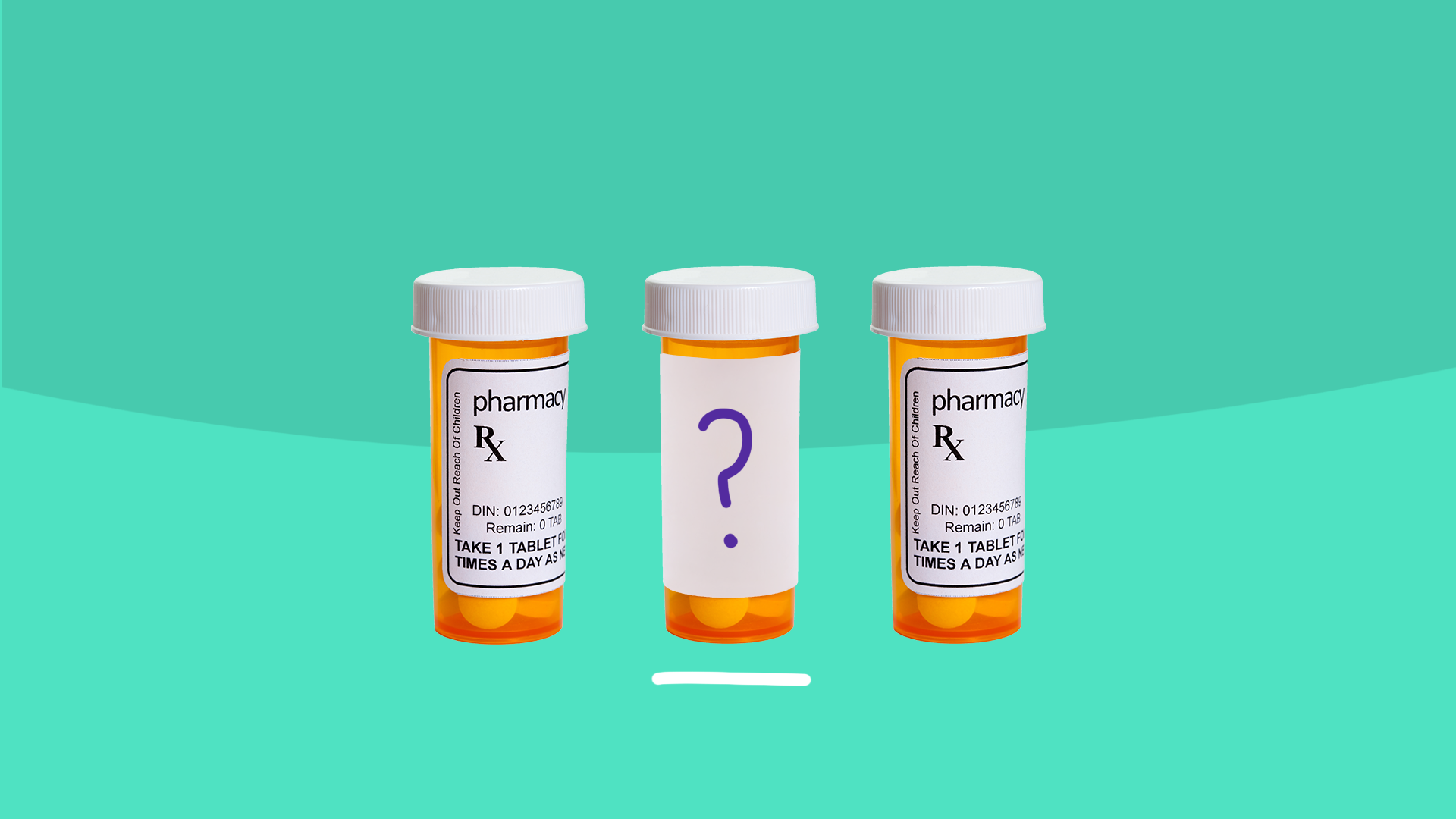Common Keflex side effects | Nausea and diarrhea | Serious side effects | Allergic reactions | Fatigue | Yeast infections | Side effects in seniors | How long do side effects last? | Warnings | Interactions | How to avoid side effects
Keflex (cephalexin) is a commonly used brand-name antibiotic and member of the first-generation cephalosporin antibiotic class. The drug is approved by the FDA for the treatment of bacterial infections of the skin and soft tissue, strep throat, and urinary tract infections. Keflex can be taken as a tablet, capsule, or liquid, typically two to four times daily. This article will focus on Keflex side effects, warnings, and drug interactions.
RELATED: Get free Keflex coupons | What is Keflex?
Common side effects of Keflex
The most commonly reported Keflex side effects include:
- Diarrhea
- Nausea
- Vomiting
- Dyspepsia (indigestion)
- Abdominal pain
Nausea and diarrhea
Diarrhea is the most common side effect of Keflex, occurring in 4% of cases in one study. While nausea incidence alone was not defined in the study, vomiting was experienced by 0.5% of individuals.
Diarrhea can be mild and related simply to the antibiotic, but it can also be severe and associated with clostridium difficile (C.Diff) colitis. Colitis is an inflammation of the colon or large intestine. Colitis from C.Diff results from antibiotic-related elimination of the good bacteria from the colon, which permits the bad bacteria C.Diff to proliferate. Signs of C.Diff colitis that may differentiate it from routine antibiotic-associated diarrhea include watery stools, mucus in stools, fever, and stomach pain. When in doubt, it is best to seek the opinion of a healthcare provider for significant diarrhea that is experienced during or after Keflex treatment.
Nausea is not as common as diarrhea during Keflex treatment. Any vomiting from Keflex should be reported to a healthcare professional, as should any coinciding yellowing of the skin, abdominal or flank pain, or painful urination.
Serious side effects of Keflex
- Serious allergic reactions including anaphylaxis
- Severe skin reactions including Stevens-Johnson Syndrome (SJS), Toxic Epidermal Necrolysis (TEN), and erythema multiforme
- Aplastic anemia and hemolytic anemia
- Pancytopenia (reduced red and white blood cells and platelets) or reductions in one of these blood cell types
- Interstitial nephritis (kidney disease and dysfunction from inflammation)
- Cholestatic jaundice (jaundice from lack of bile flow)
- C.Diff-associated diarrhea
Keflex allergy
The rate of allergy to the cephalosporin class of antibiotics is about 2% in the general population. Because there is cross-reactivity with penicillins, the rate of cephalosporin allergy is 8% in those who have a hypersensitivity to the penicillin class of antibiotic. For this reason, there should be cautious consideration before taking cephalexin or any cephalosporin if there is a history of a penicillin allergy, and a healthcare provider should guide the decision-making. If one has had anaphylaxis from a penicillin drug, cephalosporins are best avoided in most instances.
Anaphylaxis is a severe allergic reaction that can manifest with swelling, hives, trouble breathing, abdominal pain, and dizziness from low blood pressure. Cephalosporins like Keflex can cause anaphylaxis, with incidence rates reported between 0.1% and 0.0001%. This life-threatening reaction requires immediate emergency medical services, including the injection of epinephrine.
Immune reactions to Keflex can extend beyond common allergic reactions. The drug treatment can trigger the immune system to attack different body systems, including the kidney (interstitial nephritis), blood cells (hemolytic anemia), joints (serum sickness), and skin (SJS and TEN). Symptoms of SJS and TEN include skin rash with skin blistering and breakdown along with ulcers on the eyes, mouth, and genitalia. These severe skin reactions are rare, but they can be fatal.
Other possible side effects
Fatigue
Fatigue or asthenia has been cited to occur in less than 1% of individuals taking cephalexin. This symptom takes on more importance when it becomes severe or associated with skin pallor (an unhealthy lack of skin color), because cephalexin has, in rare case reports, been associated with hemolytic anemia, the destruction of circulating red blood cells, and aplastic anemia, the lack of bone marrow production of red blood cells. Severe fatigue should prompt a medical evaluation.
Yeast infections
The incidence rate of skin yeast infections has been found to be less than 1%, but vaginal yeast infections are reported more often. Since there are effective treatments available for yeast infections, seeking medical attention is worthwhile if symptoms like skin rash or vaginal discharge or itchiness are experienced.
RELATED: How to prevent yeast infections from antibiotics
Side effects of Keflex in elderly patients
Seniors have the potential for the same side effects as anyone else when treated with Keflex. However, in seniors, the increased prevalence of kidney disease or renal impairment, as well as a longer list of coinciding medications, may necessitate an adjustment to the antibiotic or dosing plan.
How long do Keflex side effects last?
The duration of Keflex side effects can be quite variable. Nausea, mild diarrhea, and fatigue may last only as long as the antibiotic course, and they will likely resolve when the antibiotic is completed. Immune-mediated reactions can be longer. For example, allergic reactions can continue to produce symptoms for days to weeks. Anaphylaxis may require emergent management for hours to days. SJS or TEN could require critical care treatment for weeks.
C.Diff colitis may gradually worsen while on Keflex or may not even arise until weeks after completion of the medication. Special antibiotic treatment may be needed for C.Diff colitis to resolve.
Keflex contraindications and warnings
Keflex is not habit-forming, and it can be stopped without fear of withdrawal.
The maximum dosage of Keflex is 4000 mg per day, but typical treatment in adults amounts to 1000 mg to 2000 mg per day. Because overdose can lead to serious adverse effects, like nausea, vomiting, diarrhea, abdominal pain, and blood in the urine, medical attention and a call to the Poison Helpline at 1-800-222-1222 is recommended.
An advantage of Keflex is its broad potential for use in different individuals.
- Regarding age, anyone from infants to seniors can take it.
- Pregnant women and breastfeeding women can take it. Low levels of cephalexin in breast milk are not expected to cause adverse effects.
- Anyone with renal impairment or kidney disease can take it but will need dose adjustments made.
- Hepatic or liver disease does not necessitate dose changes.
Keflex interactions
A host of drugs and drug classes, including blood thinners, oral contraceptives, and certain antibiotics and antivirals, can interact with Keflex. Therefore, a healthcare provider must review the complete medication list before prescribing Keflex. Here are a few prescription drugs that may interact with Keflex:
- Metformin effectiveness must be monitored with blood glucose checks while on Keflex due to causing an increase in metformin concentration.
- Jantoven (warfarin) effectiveness must be monitored with PT/INR checks while on Keflex due to heightening Warfarin’s action by reducing vitamin K levels.
- Probenecid may need to be avoided based on increasing the concentration of Keflex.
- Dofetilide use is absolutely avoided with Keflex due to the risk of heart arrhythmias.
How to avoid Keflex side effects
If you have questions about Keflex, your pharmacist or healthcare provider can provide drug information and medical advice for avoiding side effects of cephalexin.
- Take this medication as prescribed. It may need to be taken up to four times daily so set reminders to do so. Do not take Keflex for viral infections or common colds because it will not help. Take a missed dose as soon as you remember. If it is almost time for your next dose, wait until then and take a regular dose. Do not take extra medicine to make up for a missed dose.
- Take this medication with food if it causes stomach upset.
- Take over-the-counter probiotics to potentially reduce the risk of C.Diff-related diarrhea.
- Store Keflex tablets and capsules at room temperature, but store the liquid form in the refrigerator.
- Carefully review your allergy and medication list with the treating healthcare professional and pharmacist before taking Keflex.
- In some treatment circumstances, Keflex treatment may need to be continued for weeks or months. If so, blood test monitoring for kidney and liver function and for blood cell counts may be advised by the healthcare provider.











